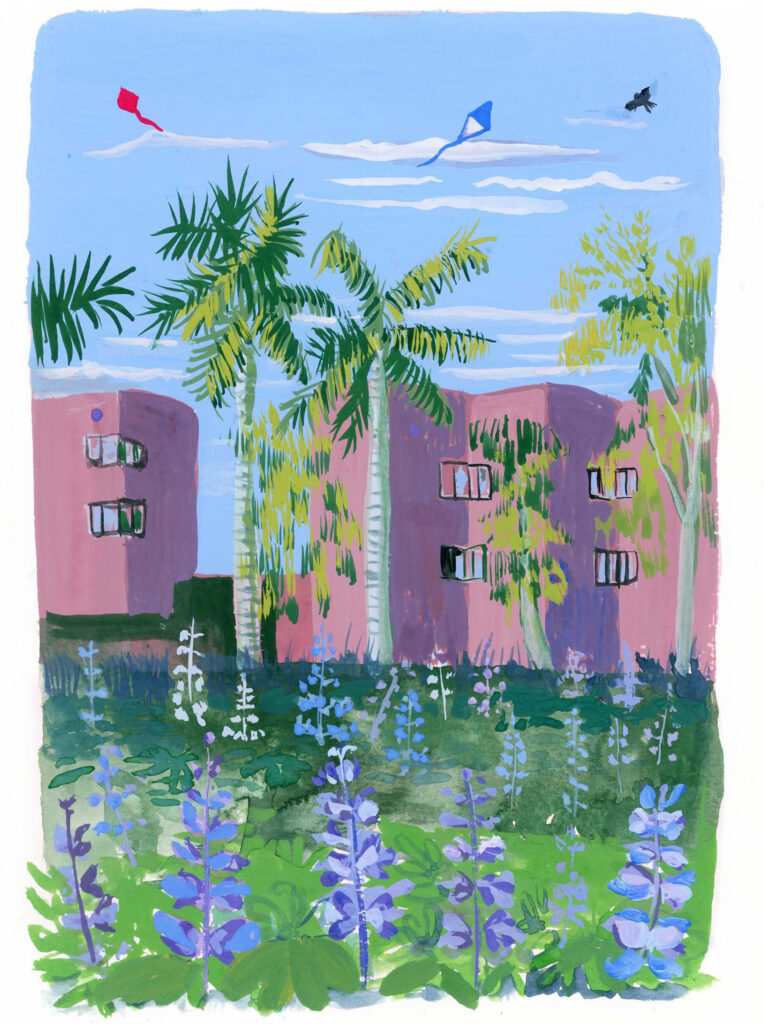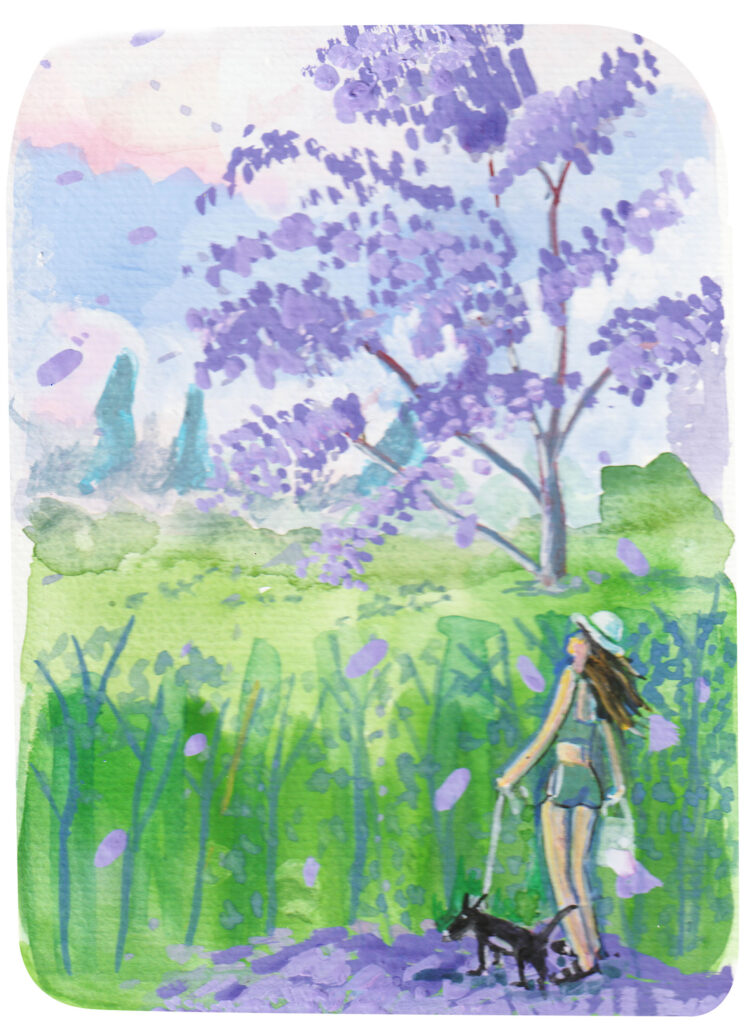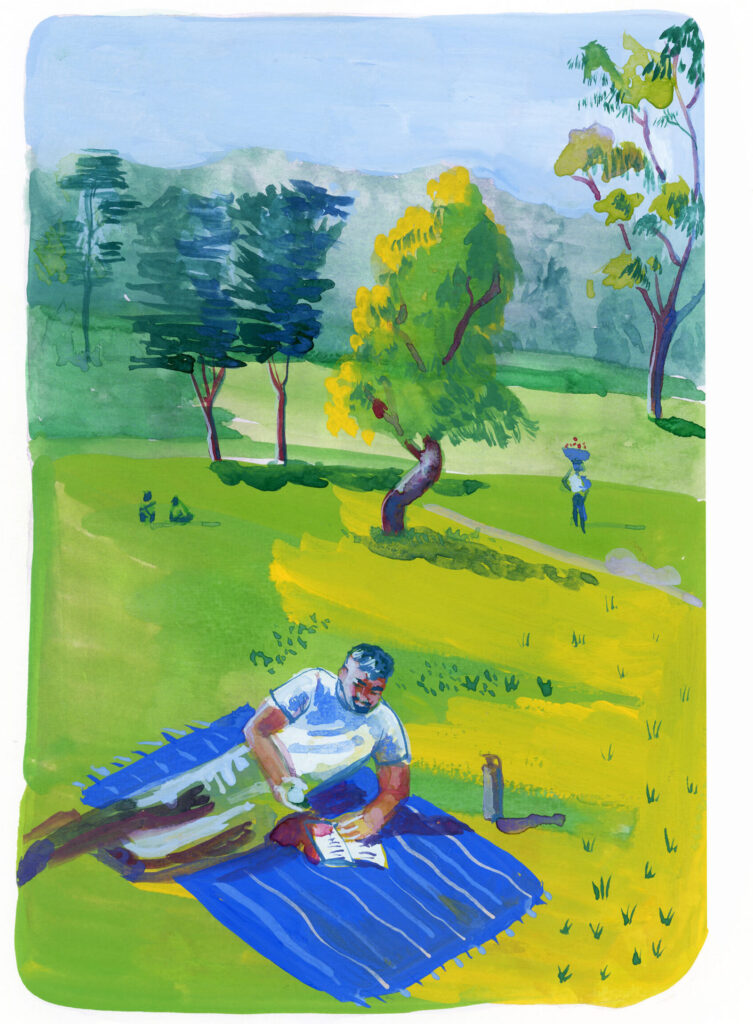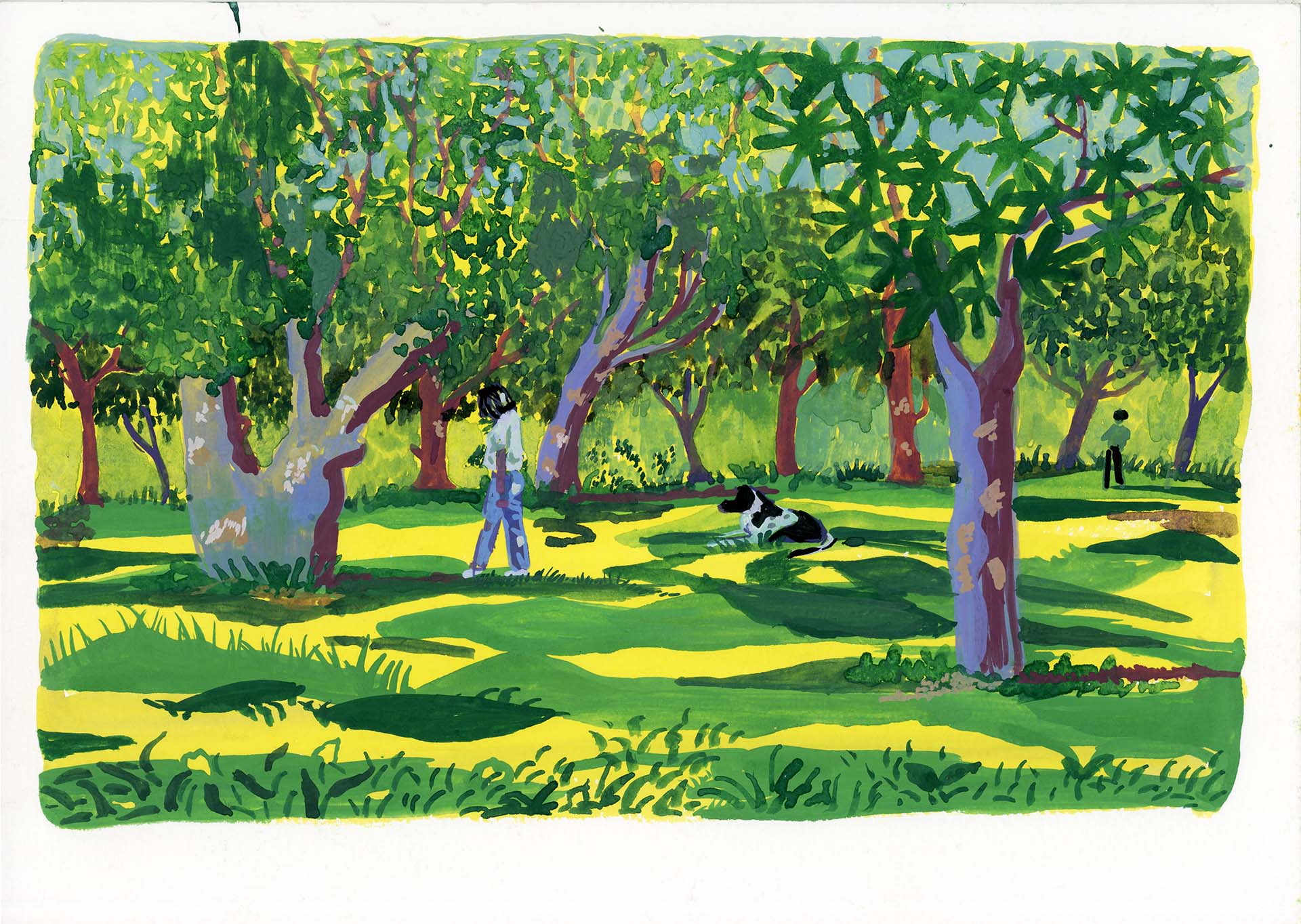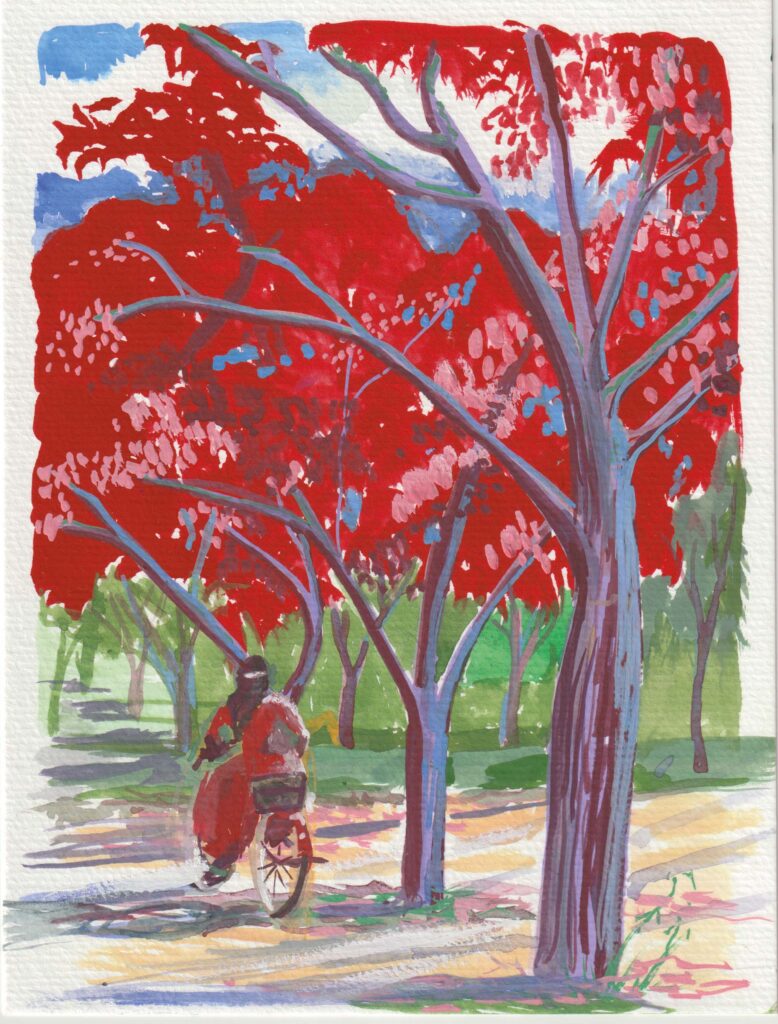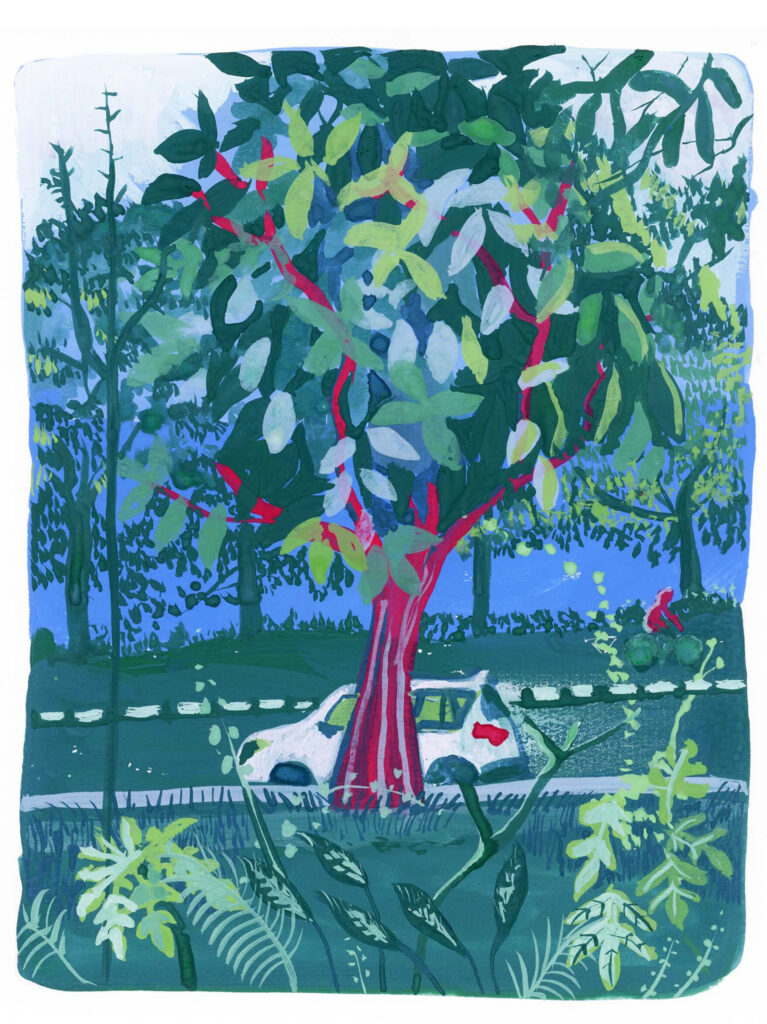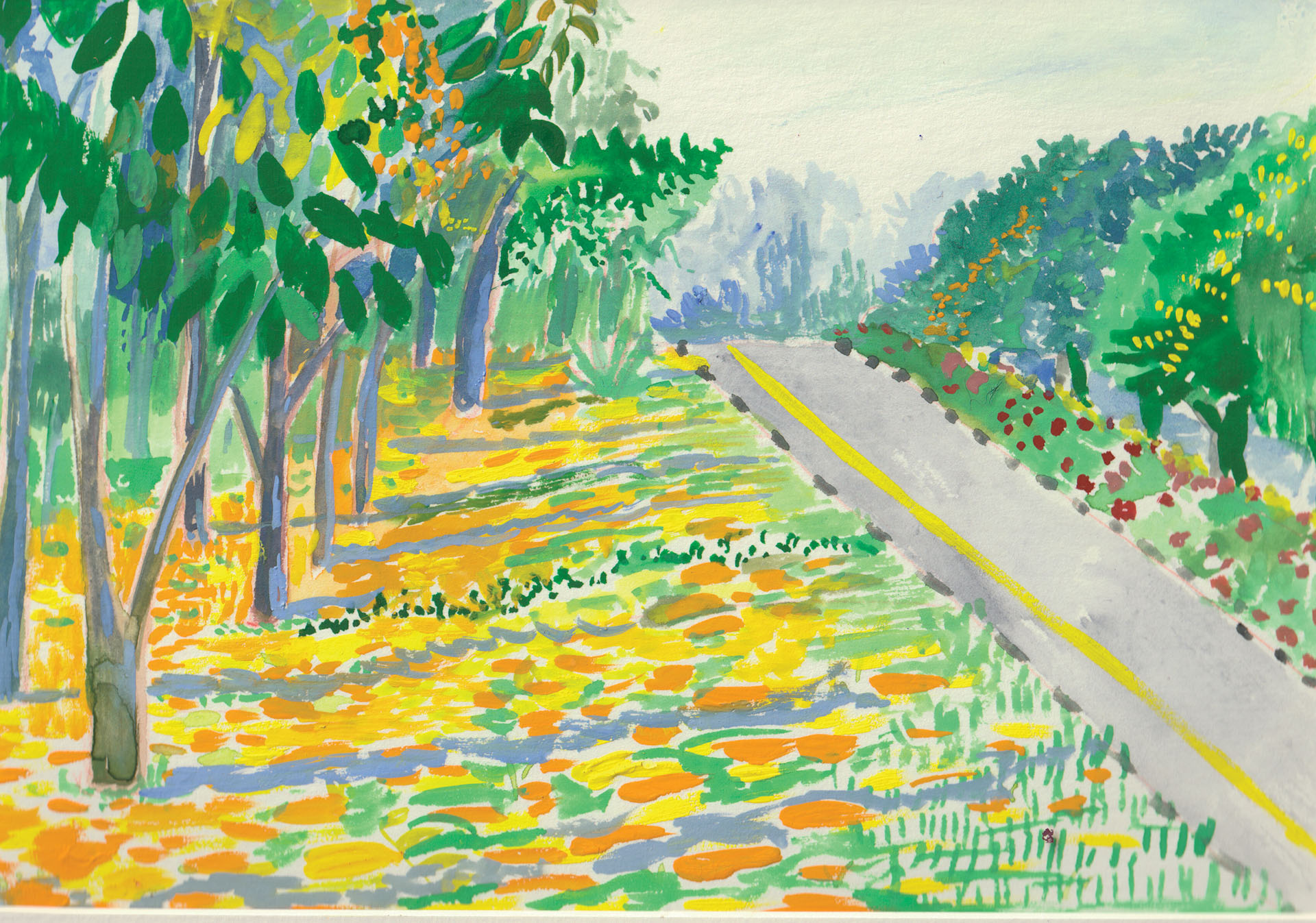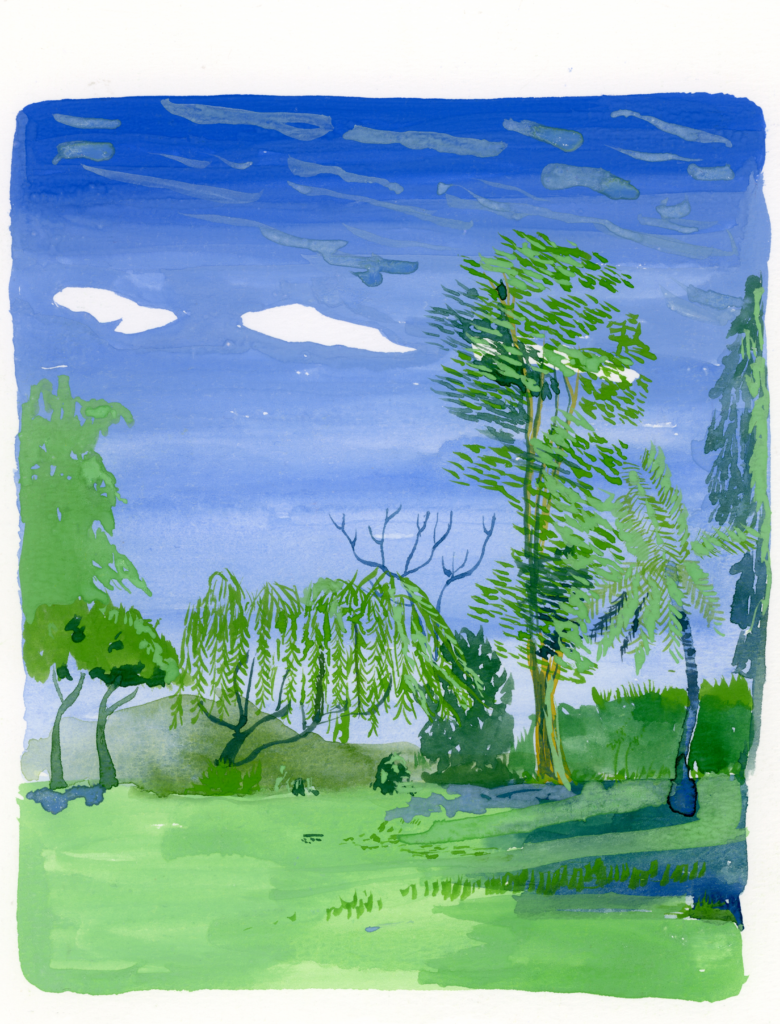Designed by Le Corbusier, visit the northern Indian city of Chandigarh via the colorful paintings of Samia Singh.
Chandigarh has a sleepy, suburban, laid-back personality which is shifting slowly as the youth return from different parts of the world to set up circular economy models, opening new cafes selling artisanal coffee sourced from small Indian farms along with handmade chocolates, and fresh high-quality farm-sourced produce.
A small city with an estimated population of 1,239,699 people, Chandigarh was India’s first planned city, created soon after the country gained independence in 1947. This was the dream city of India’s first Prime Minister, Jawaharlal Nehru. Picturesquely located at the foothills of Shivaliks, it is known as one of the best experiments in urban planning and modern architecture in the twentieth century in India.
A city with plenty of cycling lanes shaded by Pilkan Fig trees, the overhead tree cover is a lesson for the rest of India in approaching its harsh summers, especially benefitting cyclists and pedestrians.
Le Corbusier, the celebrated Swiss French architect, conceived of this groundbreaking endeavour and forever changed the course of urban planning with his innovative designs. The city’s layout revolves around well-organized sectors, each serving as a self-sustaining microcosm with a balanced mix of residential, commercial, and recreational spaces. This unique concept embodies the essence of a ‘City Beautiful,’ with a grid layout that not only ensures seamless transportation but also promotes the integration of green spaces throughout the urban fabric, enhancing the well-being of its inhabitants.
Chandigarh’s commitment to sustainability and environmental preservation is evident in its emphasis on sustainable infrastructure, setting a shining example for urban planning practices worldwide. Its enduring legacy continues to inspire architects and city planners to think creatively and create harmonious, functional spaces for generations to come.
I came back to Chandigarh after working for nearly a decade in Delhi and other parts of the world including Italy, Spain, Japan, and Scotland. The cities I have lived and worked in proved to be inspiring yet busy. I felt a calling to be back home, in the tiny markets situated in each sector where you can run all your errands swiftly. I longed for the familiarity of the terrain, temperatures, and language.
Why do you go away? So that you can come back. So that you can see the place you came from with new eyes and extra colors. The place you return to is not the same as the place you left.
There are a few challenges ahead as the population increases and public transport is being planned as a metro system. Will it be overground or underground? How many trees will be cut? Will Chandigarh hold its vision of a ‘City Beautiful’ despite the growing urban demands it has been able to tend to so far?
